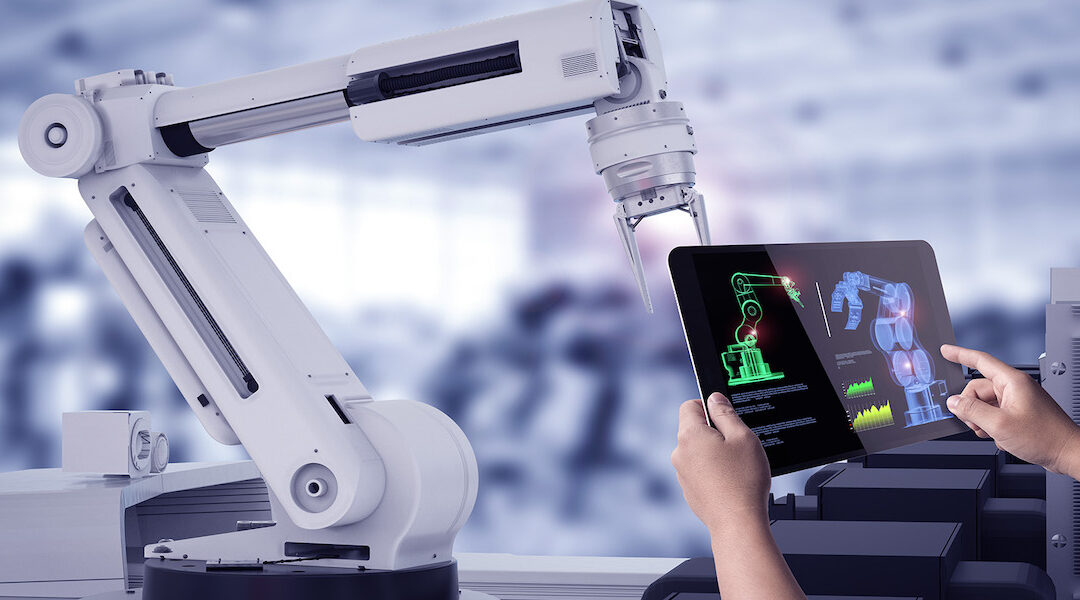The world is evolving at a rapid pace, and so is the way our businesses manufacture goods and services. In addition to becoming a more remote workforce, we are seeing more industries turn to automation and robotics to complete repetitive and complex tasks, as well as unsafe duties that keep humans out of harm’s way.
This isn’t exactly a slow change either. According to a study called “How Robots Change the Work,” created by global advisory firm Oxford Economics, “The number of robots in use worldwide multiplied threefold over the past two decades, to 2.25 million. Trends suggest the global stock of robots will multiply even faster in the next 20 years, reaching as many as 20 million by 2030.” While this change may be alarming to some, it is often for the best. Here are some great benefits to this tech and many industries that are taking full advantage.
Benefits of Automation
As far as a company’s bottom line is concerned, automation is becoming much more desirable as time goes on. There is the stigma that robots and AI take away human jobs, but when they do, they take away the types of jobs that probably should have been done by machines a long time ago. This includes repetitive tasks like data entry and filing paperwork. Robots don’t get bored and experience reduced productivity after long periods of time, so they can file paperwork for days while your employees focus on more important tasks.
Automation also increases accuracy. Even the most highly-trained humans are prone to error. However, machines can be programmed and cannot be distracted, so they produce the right results every time. Automated programs can also be run at any time, day or night, providing additional flexibility.
While the benefits are very apparent, many businesses may stray from automation because they assume that the cost is too great for their current budget. However, there have been advancements in this regard as well. According to the aforementioned study by Oxford Economics, the cost of automation and robots is also becoming more cost-effective as longer battery life and stronger microchips allow this tech to last for years, which saves money over time that would otherwise be spent on hiring, training, and providing benefits to human employees.
Automation in Current Industries
While many people think of automation as robots working in car factories and warehouses, this emerging tech is expanding to many industries across the spectrum. Currently, the shipping industry is using artificial intelligence to improve fleet management by helping truck drivers reduce driving time, find the best routes, and stay safe by detecting mechanical issues before they happen. Eventually, the idea is to use this data to create autonomous vehicles that can deliver goods across the country without the need for a driver or when the operator may need a break.
To really wrap your mind around the concept, it is important to remember that automation isn’t only about robots but also completing smaller tasks so your staff can focus on the bigger needs. Take email marketing, for instance. Many companies are using automation to send emails to new customers as soon as they sign up for mailing lists or purchase a particular product. This is the type of “set it and forget it” tool that can keep customers informed while your team works on improving the products themselves.
Of course, robots are also part of the picture, and many industries are already using them to their benefit. Robots are being used more often in shipping centers because as soon as a customer orders an item, the bot knows immediately where to go to pull it out of inventory, before boxing it up and placing it for delivery. Adidas is another company that is beginning to use robots to make their shoes, thus eliminating breaks, lunches, overtime, and more and saving money in the process. This is just the beginning. The sky’s the limit to which functions we will see robots complete in the future.
How Your Company Can Prepare
If your management team is interested in automating portions of your business, proper planning will be essential. Start by looking at your existing processes and your current staffing and think about which tasks you would like to see become automated and how you can put your newly found work time to better use. You can base this decision on your budget and where you want to save money or by determining which functions may no longer need human intervention, like email or accounting tasks that can be programmed into a machine.
Management should also take great care to properly inform their teams if some of their job functions will be taken away and given to automation. You do not want to keep this information a secret.
It can be a scary situation for many to think that they are expendable, so it is important to remind them of the benefits of going in this direction. Let your staff know that this tech has the potential to save on expenses and help the company increase profits, thus, ensuring job security and future work on more meaningful tasks.
This is also a good time to focus on higher learning. Many great programs teach students about evolving technologies, information systems, and other topics that can prepare them for what the future holds. Recommend these programs to your best IT and engineering team members as not only a way to understand how to work with future tech but also as a way to grow within their own fields.
Many people tend to think negatively when it comes to automation, but it doesn’t have to be that way. By fully understanding the strategies and benefits of this evolving technology, businesses can grow, and workers can expand their horizons and reach new heights.
Charlie Fletcher is a freelance writer from the lovely “city of trees”- Boise, Idaho. Her love of writing pairs with her passion for social activism and search for the truth. You can see more of her work on Contently.
















